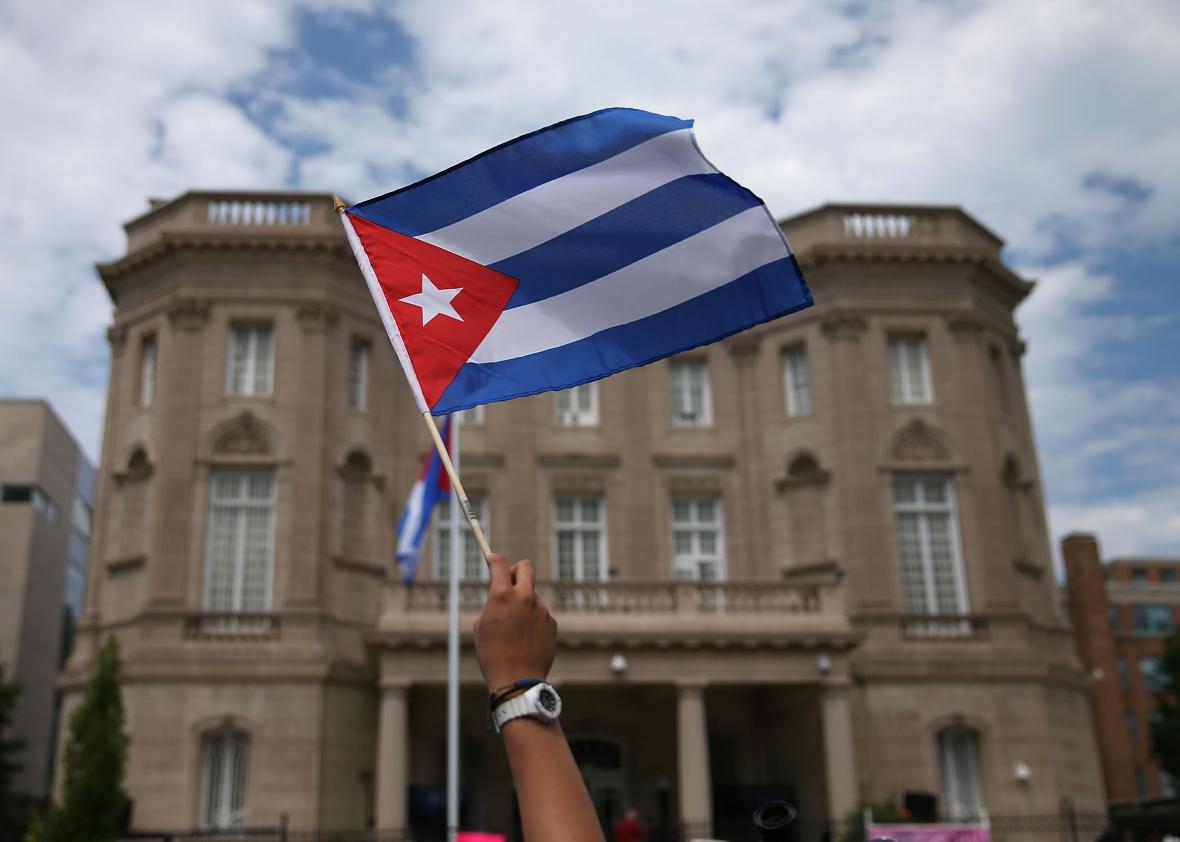On Jan. 3, 1961, just before the end of his final term as president, Dwight Eisenhower announced that he was taking the dramatic step of severing U.S. diplomatic relations with Cuba. The relationship between the two governments had been steadily declining since Fidel Castro had ousted Cuban dictator Fulgencio Batista in 1959, with Castro moving closer to the Soviet Union, nationalizing U.S.-owned businesses, and publicly alleging—correctly, as it turned out—that the U.S. was plotting to overthrow him. But the immediate cause of the break was Castro demanding that staff of the U.S. embassy and consulate in Cuba be reduced to 11 people, which Eisenhower said “can have no other purpose than to render impossible the conduct of normal diplomatic relations.” (Castro charged that 80 percent of U.S. embassy staff were spies.) Rather than comply, the president cut off diplomatic relations entirely, saying, “There is a limit to what United States in self-respect can endure. That limit has now been reached.”
Both sides seemed to view the break as temporary. “It is my hope and my conviction that in the not-too-distant future it will be possible for the historic friendship between us once again to find its reflection in normal relations of every sort,” said Eisenhower, decrying the “yoke of tyranny” imposed by Castro on the Cuban people. Speaking later that week at the U.N., Cuban Foreign Minister Raul Roa Garcia noted that his country’s quarrel was not with the American people but with the “reactionary Eisenhower administration,” and said that his government was awaiting “a wiser course” under incoming President John F. Kennedy.
In reality, relations seriously deteriorated under Kennedy, and it would take 54 years for another lame-duck president to fully restore diplomatic ties—a move that became official today with the raising of the Cuban flag over the country’s embassy in Washington. Secretary of State John Kerry will travel to Cuba to raise the stars and stripes over the U.S. embassy in August. As for the “yoke of tyranny” in Cuba, that’s still in place.
Reaction to Eisenhower’s move from the U.S. media and on Capitol Hill was mostly positive in ’61, with the break widely viewed as an inevitable response to Castro’s provocations. But there were some dissenting opinions. The New York Times reported on Jan. 5 that Rep. Henry S. Reuss, Democrat of Wisconsin, said that the break in relations “makes it much more difficult for the Cuban people to restore their government to sanity by peaceful means”—a remark that anticipates the complaints of some Cuban dissidents today.
In a prescient analysis, veteran foreign correspondent Alvin Shuster noted skeptically that “the act of severing diplomatic relations has over the years amounted to a slap in the face that often left the intended victim unharmed.” He pointed to failed efforts to isolate the Bolsheviks after the Russian Revolution, the Communist government in China, and the Franco regime in Spain as cases in which cutting diplomatic ties “had little impact.”
Shuster wrote that thanks to the closing of the U.S. consulate, Cubans looking to come to the U.S. would have to first obtain visas from other countries. Also anticipating what has been one of the most covered aspects of U.S.-Cuba policy in the decades to come, he pointed out that “This would apply not only to the thousands of Cubans who want to come here but to the two Cuban pitchers of the new Minnesota Twins baseball team—Camilo Pascual and Pedro Ramos—who are now at home in Cuba.”
